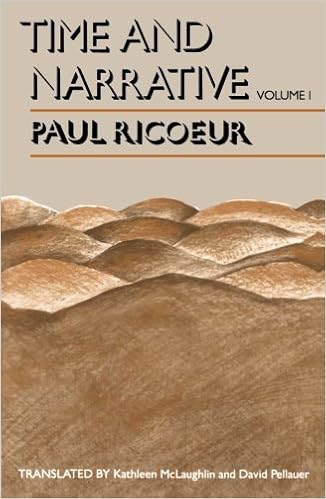
Heidegger is the single philosopher of his new release whose philosophy of expertise remains to be generally learn at the present time. In it, he made 3 easy claims. First, he asserted that the essence of expertise isn't really technological--that know-how isn't a impartial instrumentality. moment, he claimed that there's a qualitative distinction among sleek and standard applied sciences. 3rd and so much apparently, he claimed that know-how is a metaphysical viewpoint, a paradigmatic view of the full of nature. even though Martin Heidegger is still famous as a founding father of the philosophy of expertise, within the final sixty years a complete new international of applied sciences has appeared-bio-, nano-, info-, and imaging. With know-how, time strikes quick. Does philosophical time circulate, too? How enough is Heidegger's considering now for knowing state-of-the-art technological advances?After an intensive creation that areas Heidegger in the wondering expertise average of his time, the writer, a popular thinker of expertise, reexamines Heidegger's positions from a number of perspectives-historical, pragmatic, anti-Romantic and postphenomenological. His evaluations invert Heidegger's essentialism and phenomenologically study Heidegger's favorite and disfavored applied sciences. In end, he undertakes a concrete research of the applied sciences Heidegger used to provide his writing and discovers heretofore undiscussed and ironic effects. total, the publication not just serves as an outstanding creation Heidegger's philosophy of expertise and a corrective in outlining its barriers, it exhibits a postphenomenological counter-strategy for technological research, person who could examine the construction of expertise in perform, according to gazing its varieties of embodied activity.
Read or Download Heidegger's Technologies: Postphenomenological Perspectives (Perspectives in Continental Philosophy) PDF
Best Phenomenology books
Time and Narrative, Volume 1 (Time & Narrative)
Time and Narrative builds on Paul Ricoeur's previous research, within the Rule of Metaphor, of semantic innovation on the point of the sentence. Ricoeur right here examines the construction of which means on the textual point, with narrative instead of metaphor because the ruling problem. Ricoeur unearths a "healthy circle" among time and narrative: time is humanized to the level that it portrays temporal event.
Phenomenology, including Marxism, pragmatism, and analytic philosophy, ruled philosophy within the 20th century—and Edmund Husserl is generally suggestion to were the 1st to advance the idea that. His perspectives stimulated various vital later thinkers, similar to Heidegger and Merleau-Ponty, who finally became phenomenology clear of questions of data.
The philosophical paintings of Jean-Luc Marion has opened new methods of talking approximately spiritual convictions and reviews. during this exploration of Marion’s philosophy and theology, Christina M. Gschwandtner provides a complete and demanding research of the guidelines of saturated phenomena and the phenomenology of givenness.
Additional resources for Heidegger's Technologies: Postphenomenological Perspectives (Perspectives in Continental Philosophy)
The physically job within the first edition known as for a extra muscular motion, extra attempt. equally, even the clay prior to baking poses a few skilled resistance to the stylus, and if etched onto turtle shell or stone, much more. the following a physically material-tablet fabric set of lodgings and resistances issues to a human-artifact interrelationality. The scribetablet interactively permits the product to turn into what it finally turns into. And the following emerges an attractive characteristic: whereas clay, stone, and shell don't be sure what may be inscribed, they're fairly more straightforward to make straighter, instead of curved inscriptions onto difficult fabric. this can be what i've got formerly referred to as an "inclination," that is present in the human-artifact interplay. If one appears at cuneiform drugs and plenty of of the tough tablet-analogs, there's facts of a dominance of heterosexual inscriptions over curved ones. This proceeds even into Roman instances, rather with admire to lettering on stone. Or, notice the linearity of Roman numerals. Contrarily, with calligraphy and penship items, curves frequently predominate, and a kind of curvilinear playfulness turns into attainable. those trajectories should be famous in lots of historic sorts of writing: Persian and Cyrillic scripts that emphasize this curvilinear shape, in nice distinction to cuneiform or the Pakistani protoscript. sooner than leaving this variational shift and instance, permit one other "Heideggerian" second: think a cuneiform inscriber taking a look at a later calligrapher and decrying the lazy ease with which the calligrapher virtually haphazardly and so quick produces the calligraphic consequence. it truly is "too easy," it detracts from the hard-won physically attempt of the cuneiform inscription, and is "too fast," no longer permitting the tarrying of mirrored image earlier than making the subsequent mark. yet, be aware too, that cuneiform has successfully disappeared yet modern calligraphy survives! Concluding Postphenomenological Postscript • 131 Now, with the millennia-long leaps being made in my examples, flip to the following swap in writing applied sciences: the keyboard. after all, pens, which lie within the trajectory of"soft" writing applied sciences, switch over the years to boot. The ink-dipped quill pen of innovative warfare occasions gave technique to the reservoir ink pens that Heidegger himself utilized in the early 20th century (as evidenced photographically in Adam Sharr's ebook Heidegger's Hut, said in bankruptcy 5). yet even reservoir pens shrink extraneous instances spent dipping, they usually allowed for much longer and extra speedy written effects to happen. whereas Heidegger remained dependable to the pen, the typewriter had already turn into the writing expertise of selection for plenty of, certainly for many literary composers of the 20 th century. within the historical examples, even if demanding or gentle writing applied sciences, the background is spotty at most sensible. i'm ignorant of any self-reflective writing approximately writing till modernity, while it turns into universal. The typewriter, in spite of the fact that, has a really certain background, and person who consists of with it many implications for either the heritage and philosophy of know-how.



